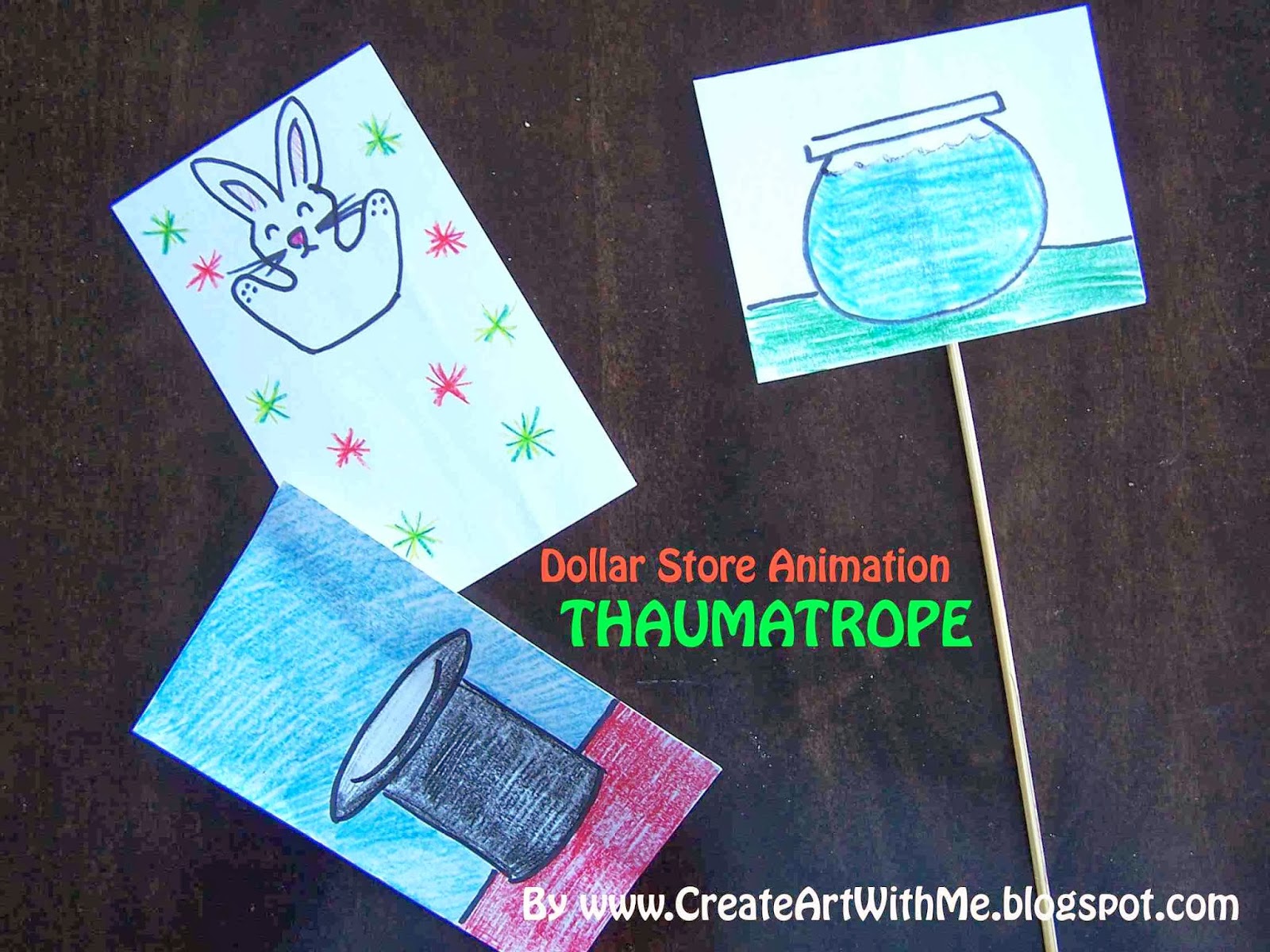 |
| On the left: a magical bunny who pops out of a magician's hat (both sides seen here). On the right: The goldfish in the fishbowl (only one side shown). |
The course was called: Animation, The Old-Fashoined Way--I wanted to start off showing students that they can create little movies from everyday items. I was able to show them all sorts of animation "machines" from the history of animation. We saw still and moving examples of each "machine" and then created our own.
I told the students that this course is mainly a workshop--lots of experimenting going on here! This was a bit different from my other art classes where they may come away with artwork for the fridge--many of the examples they made in animation class are meant to be held, spun, flipped, etc. and since I'm not telling them exactly what to animate (that wouldn't be fun!), they were going to learn-as-they-went, so they may make mistakes.
Class one, we watched a great video by MIT about the history of animation. This video has examples of many of the old-fashioned animation "machines" we were going to be creating!
http://video.mit.edu/watch/history-of-animation-3391/
First, we started off with the Thaumatrope--the easiest animation machine of all (I think).
What is a Thaumatrope?
The Thaumatrope is a great & quick way to illustrate to students the main magic about animation: persistence of vision. Students create two drawings and glue them back-to-back. As they spin the "machine" in their hands, both drawings will seem to appear at the same time.
History of the Thaumatrope:
The Thaumatrope is a simple toy that was used in the Victorian era (about 1824). Traditional examples use a string to spin the cards, but my example below uses a skewer, because I think that works better.
Examples of a Thaumatrope to check out:
The most common example of the Thaumatrope you'll see on the Internet is the goldfish in a fishbowl. I'm sure you can do better than that! But check these out for inspiration:
- Martha Stewart has two printable Thaumatropes: the bird in a cage and a fish in a fishbowl. http://www.marthastewart.com/957770/paper-movies-thaumatrope
- Jack & Beverly's Optical Toys also has a neat page on Thaumatropes with old-day's examples: http://brightbytes.com/collection/thaum.html
Make Your Own Thaumatrope!
Supplies Needed:
- One 4"x6" white index card
- Clear tape
- Pencil with eraser
- Glue Stick
- One wooden skewer (I've also used plastic drinking straws)
- Markers
- Colored pencils and/or crayons
Directions:
1. Fold the index card in half widthwise (hamburger or taco fold).
2. Lightly sketch 2 images (one on each side of the index card) using the pencil. Make sure that your drawings line up when you flip back and forth between them: I had students fold the index card and then hold the card up to the light in a sunny window so they could see both pencil drawings through the paper. Make adjustments as necessary.
3. Outline the finished pencil lines with marker and color the drawings with colored pencil to make them nice and bold. Animations work best if you do your best coloring.
4. Tape the skewer to the center of the inside of the folded index card. Glue the inside of the index card with glue stick and fold the card closed over the skewer to secure (refer to the photos in this post).
5. Roll the stick of the Thaumatrope back and forth in your hands and enjoy!
----------------------
Other posts in the "Dollar Store Animation Class" Series:
• Thaumatrope (you're here!)
• Phenakistoscope
• Zoetrope
• Flip books
• Stop Motion (Part 1)
• Stop Motion (Part 2)
No comments:
Post a Comment